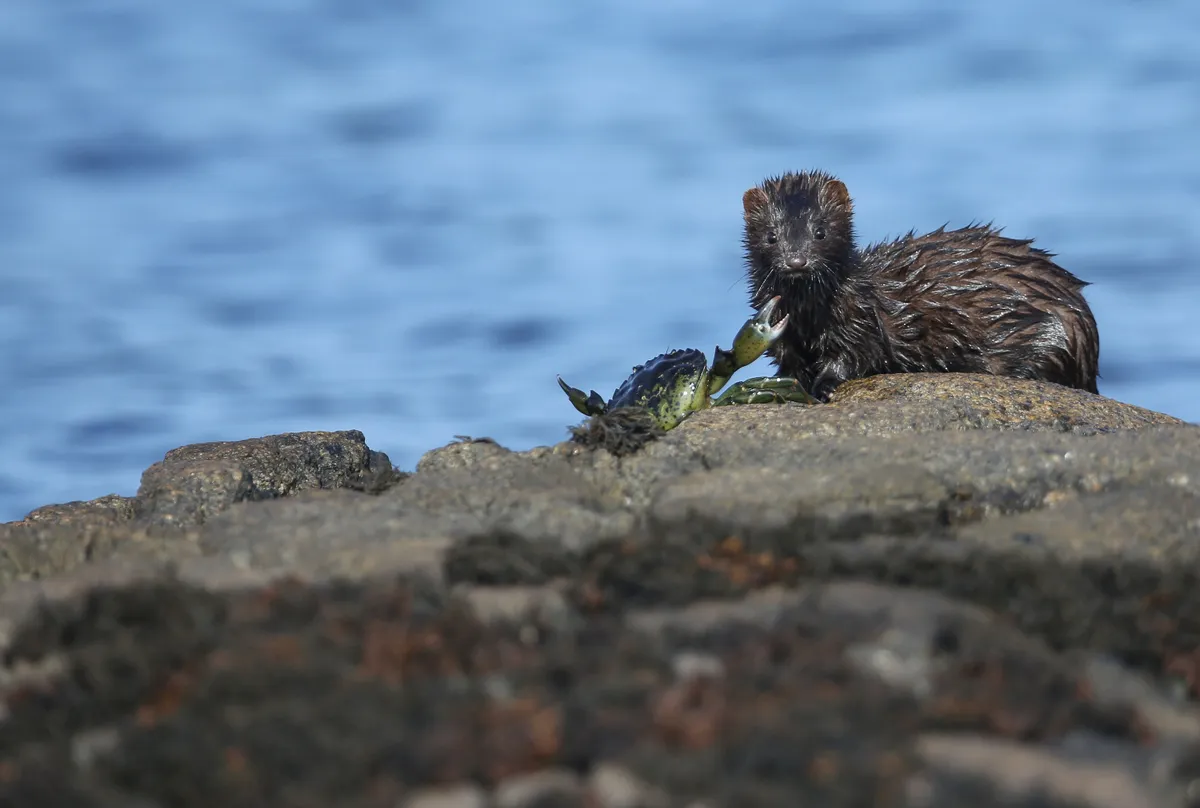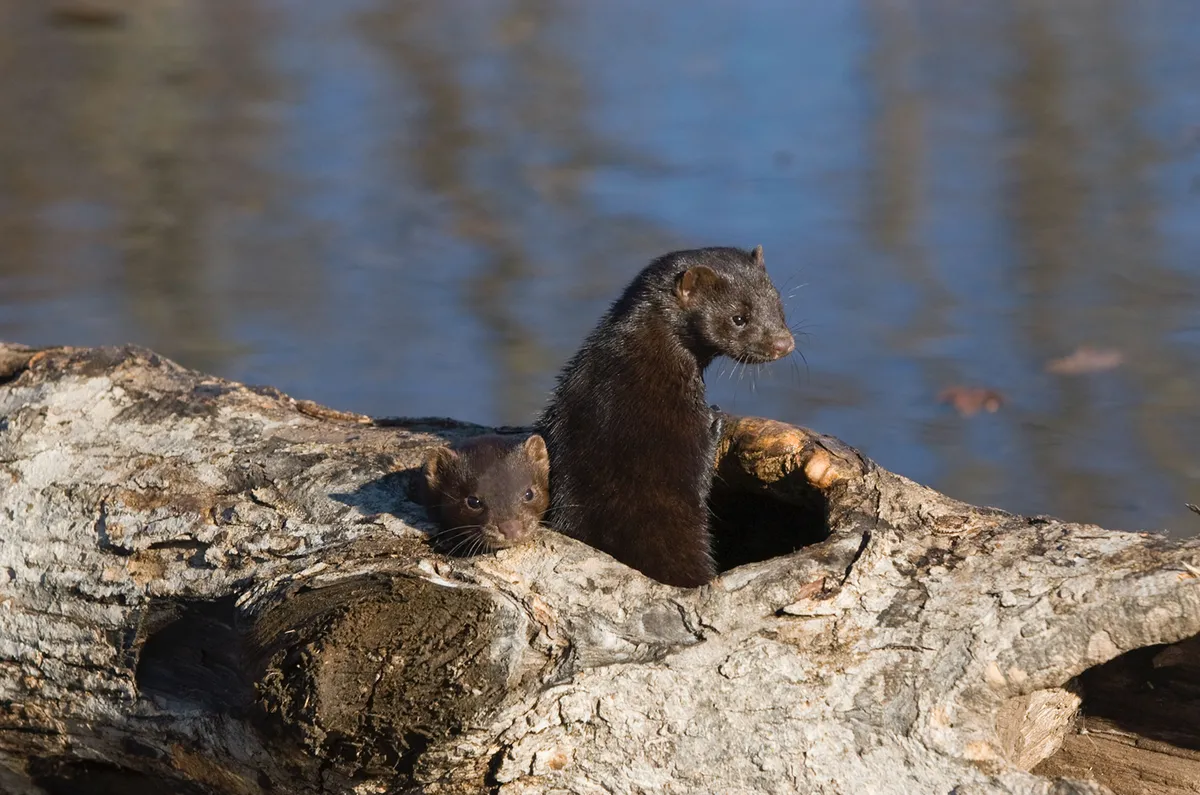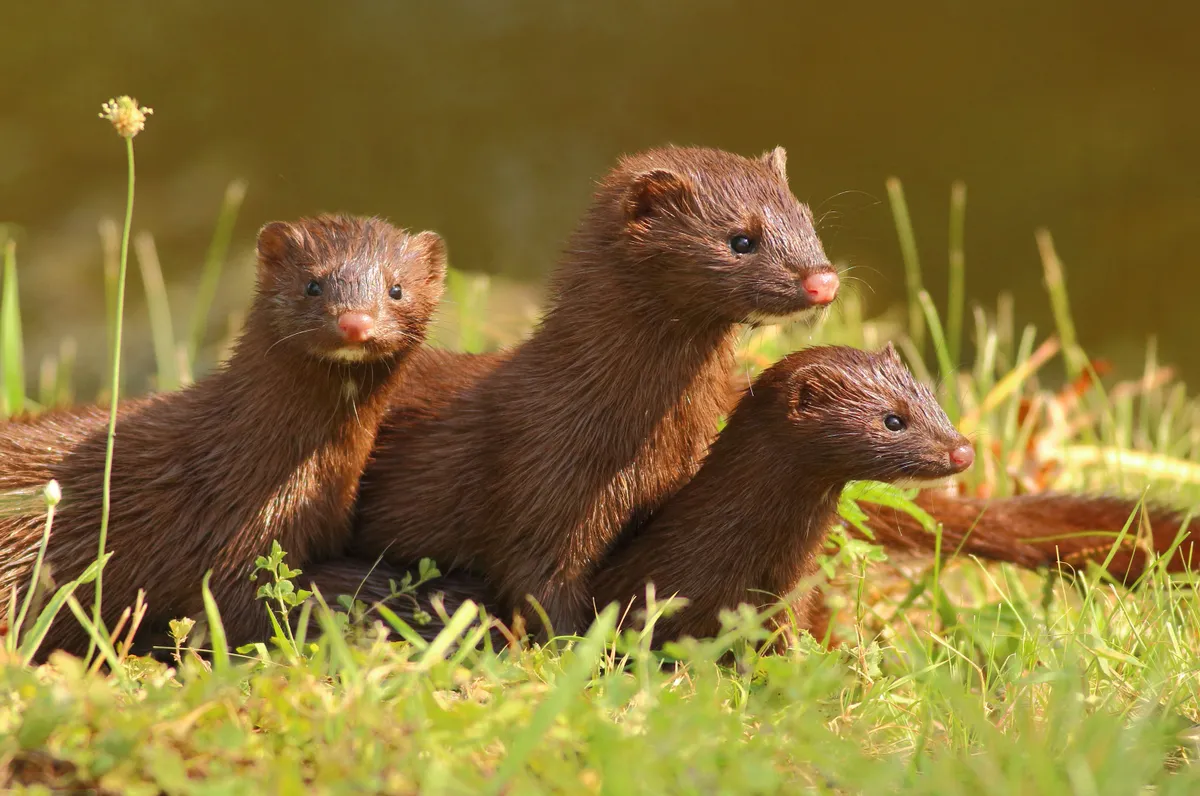Our guide to mink in the UK, including facts about the species, what they eat, and where to see.
What is a mink?
The American mink (neovison vison) is a small carnivorous mammal native to North America but established throughout the UK. With a body length of between 40 and 65cm including tail and a weight of 4-5kg, the mink is a relatively small member of the mustelid family, with relatives including otters, badgers, stoats and weasels.
How to identify mink
Mink have long thin builds and range in colour from light to dark brown with distinctive white patches on their chins and throats. Mink are largely solitary but vocal signals when in contact with other individuals consist of squeaks, chuckles and squeals. They are mostly nocturnal or active at dusk and have a lifespan of 10-12 years.

What do mink eat?
Mink are aquatic carnivores that will hunt any animal smaller than them. They are efficient and opportunistic predators and their well-developed senses permit underwater hunting, with strong eyesight and sensitive whiskers allowing them to detect prey even in murky waters. Mink can remain submerged for up to twenty seconds while locating slow-moving prey such as crayfish, molluscs and crustations. When available, they will also eat eels, perch, trout and young salmon, as well as aquatic birds such as coots, moorhens and ducks. Mink also hunt land animals including rabbits, rats, shrews, mice, voles, frogs and insects, using a strong bite to the back of the neck to immobilise more sizeable species. Male mink will tackle larger prey than females, dragging this back to the den to be stored and eaten later.

Where do mink live?
Mink are highly adaptive so are able to thrive in several habitat types but must live in an area with a slow-moving fresh water body, such as a river, lake, pond or stream. Coastal areas with river estuary systems containing rock pools or other slack water bodies are also suitable. Mink seldom burrow their own nests, instead electing already-established hollows in trees, exposed root networks or rock formations for shelter. Dens are always positioned near the water, their main food source. Mink are largely solitary animals, but several individual’s territories can overlap in high quality habitat areas, resulting in frequent fights among males in the mating season.

How and when do mink breed?
Mink breed once annually, with the mating season taking place from February to April and births occurring during the months of April and May. Unusually for mammals, ovulation occurs after mating. The foetus can be fully formed in the womb after just one month, but females have the ability to delay birth for up to six weeks until environmental factors such as favourable weather and increased food supply are available. New-born mink are called kits and each litter comprises of between three and seven young, born blind, deaf and furless at around 5g. After one month, they will have developed a dark grey fur coat and opened their eyes. Weaning usually lasts for eight weeks and kits will become fully independent by fourteen weeks of age. By the following spring they will have reached sexual maturity.

How did mink become established in the UK?
American mink were first brought to the UK to be bred in fur farms in the 1920s. There are no records of them breeding in the wild until 1956, but by 1967 the species had become established in half of England, Wales and lowland Scotland. According to the Game and Wildlife Conservation Trust (GWCT), animal rights activists did carry out deliberate releases of mink in the 1990s, but they are not to blame for the species become established in the wild; it was accidental escapes from farms in the 1950s and 1960s that seeded the wild population. Mink farming was banned by the Fur Farming (Prohibition) Act 2000, though there were very few farms operating by then.

Why are mink a problem?
Once mink are introduced to a region they spread naturally, having a strong capacity for colonisation and the ability to easily cross waterbodies, including sea channels. Mink can have significant adverse effects once established, predominantly through predation and competition. They can devastate entire populations of ground-nesting birds and have had a detrimental impact on the water vole (Arvicola amphibius). Unless some areas are kept relatively or entirely free of mink, it is thought that the water vole will become extinct in much of Britain within a few years. The urgency of the situation is highlighted by the water vole's inclusion as a priority species in the UK Biodiversity Action Plan and the promotion of humane mink control as an essential tool in water vole conservation, within the National Species Action Plan.
